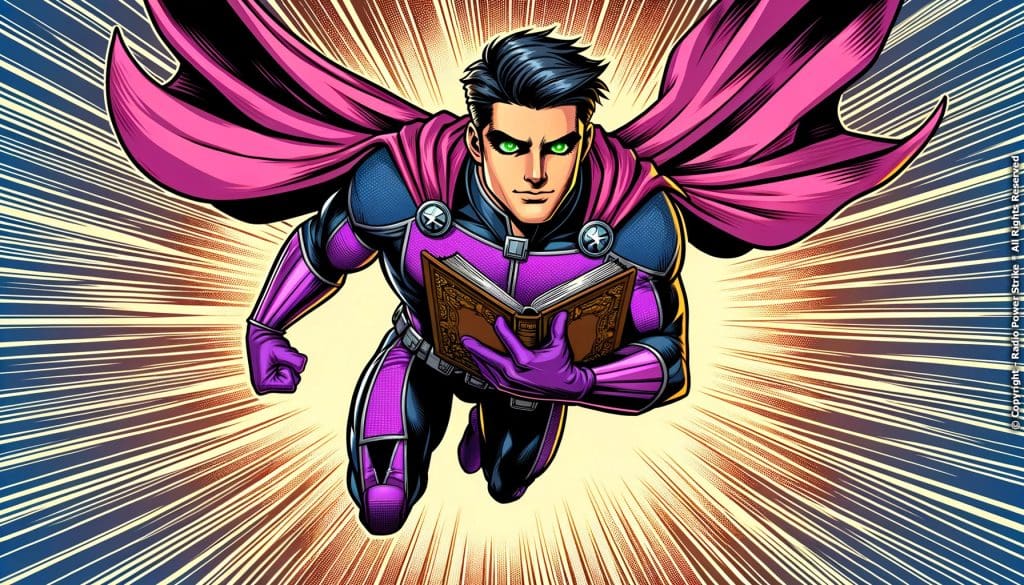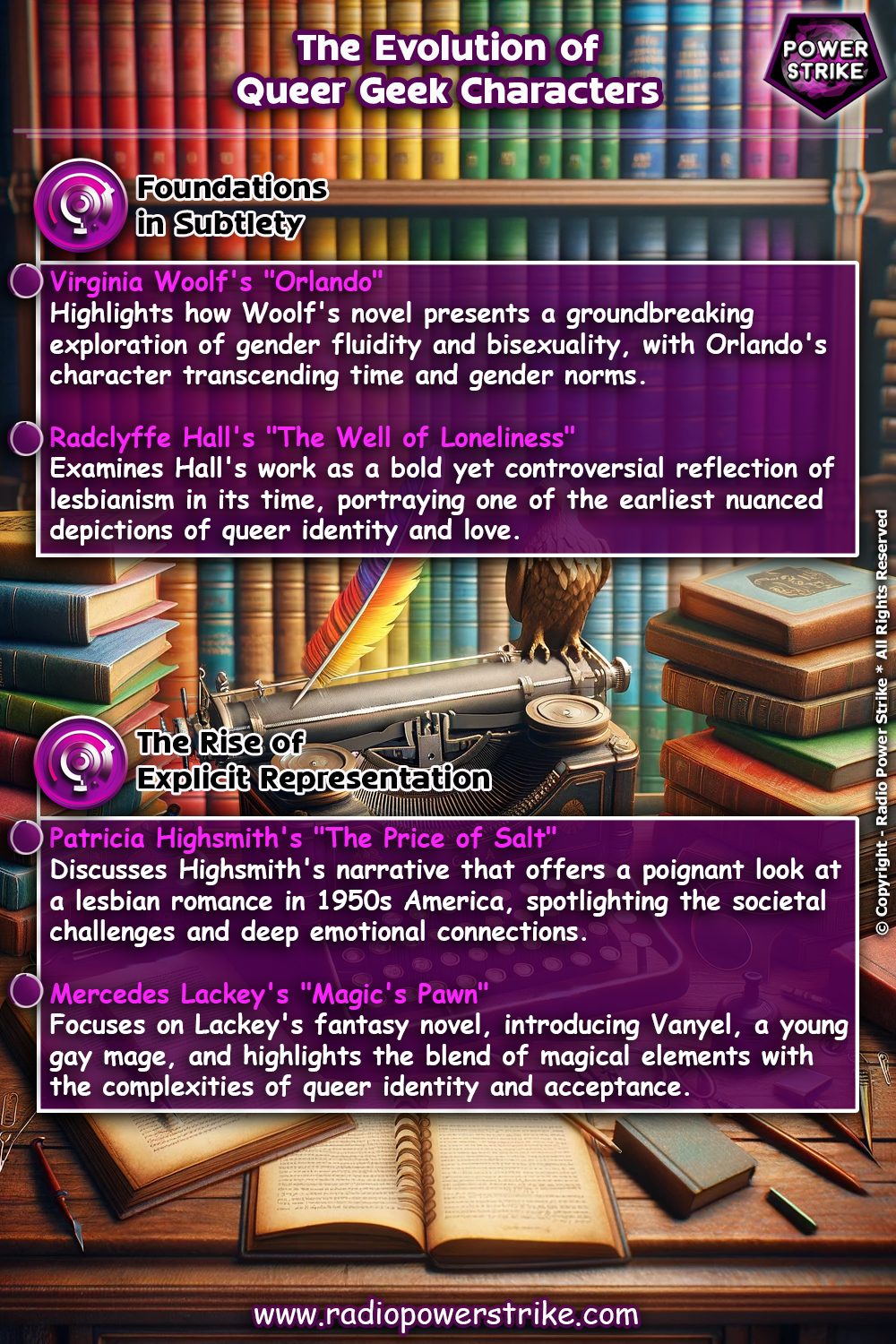Queer Geeks in Literature: Pioneers and Modern-Day Heroes
Charting the Evolution of LGBTQIA+ Representation in Literary Worlds
Listen to this article: [player id=25009]

From the hushed undertones in classic literature to the bold narratives in contemporary works, queer geek characters have long been a part of the literary fabric. Their presence has not only provided representation but has also challenged societal norms, giving voice to a marginalized community. This exploration delves deep into the journey of these characters, illuminating their significance in both past and present literary contexts.

Echoes from the Past: Early Queer Protagonists
Historically, queer characters were often shrouded in subtext, subtly hinting at their identities without overtly declaring them. These were characters that had depth, complexity, and lived in the margins.
Virginia Woolf’s “Orlando”, for instance, stands as an iconic novel that explores gender fluidity and bisexuality. Through Orlando’s centuries-long life, readers experience a character who embodies both male and female identities, challenging the rigid gender norms of the time.
Similarly, Radclyffe Hall’s “The Well of Loneliness” bravely touched upon lesbianism in a time when such topics were taboo. The novel, while controversial in its era, provided one of the earliest representations of queer love and longing.
The Rise of Queer Geek Literature
As literature evolved, so did the portrayal of queer characters, with authors more openly embracing LGBTQIA+ themes. This shift saw the birth of characters who weren’t defined solely by their sexuality but had multifaceted personalities, making them relatable to readers of all backgrounds.
Patricia Highsmith’s “The Price of Salt”, later adapted into the film “Carol”, showcased a heart-wrenching romance between two women against the backdrop of 1950s America, emphasizing the societal constraints they faced.
In the realm of fantasy, Mercedes Lackey’s “Magic’s Pawn” introduced readers to Vanyel, a young, gay mage, navigating the complexities of his powers and personal identity, providing a fresh perspective on queer characters in speculative fiction.
Modern-Day Champions: Celebrating Diversity in Literature

Today, the literary world boasts a plethora of queer geek characters, celebrated not as anomalies but as essential threads in the narrative tapestry. Their stories are diverse, spanning genres and cultures, and resonate with authenticity.
Sarah Waters’ “Tipping the Velvet” offers a deep dive into the Victorian-era lesbian subculture, blending history with fiction. Its vivid portrayal of love, identity, and societal challenges provides readers with a rich, immersive experience.
Then there’s Becky Albertalli’s “Simon vs. the Homo Sapiens Agenda”, a contemporary tale of a young gay geek navigating the trials of high school, coming out, and first love. The novel, adapted into the popular film “Love, Simon”, underscores the universality of teenage angst, love, and self-discovery.
Literature, with its vast and diverse universe, has always been a mirror to society. The journey of queer geek characters, from the pioneers who hinted at their identities to today’s unapologetically authentic heroes, underscores literature’s power to reflect, challenge, and change societal perceptions. As readers, we have the privilege to witness this evolution, finding pieces of ourselves in these characters, and celebrating the beauty of diversity and representation.

Comments are closed, but trackbacks and pingbacks are open.